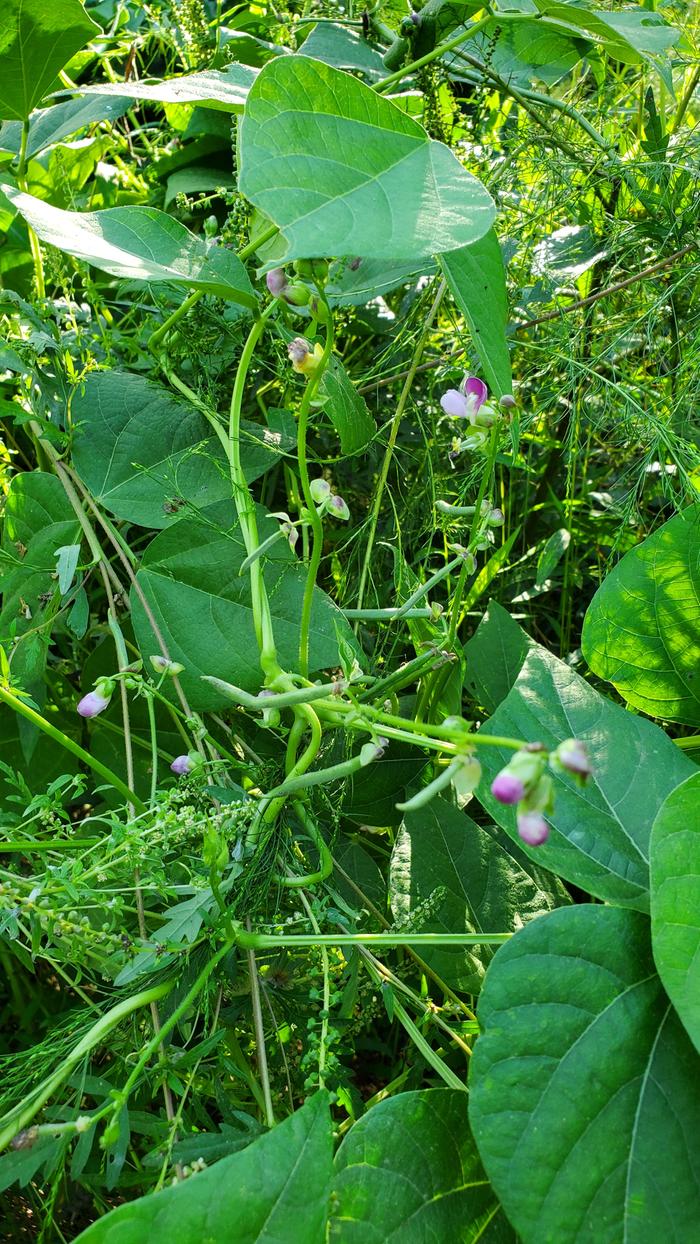
 14
14





Striving to grow things as naturally, simply, and cheaply as possible! 
My YouTube channel
 11
11





Striving to grow things as naturally, simply, and cheaply as possible! 
My YouTube channel
 9
9





 24
24




 17
17





 4
4




Tom Knippel wrote: My snap bean landraces are even more different from my dry bean landraces
How Permies works: https://permies.com/wiki/34193/permies-works-links-threads
My projects on Skye: The tree field, Growing and landracing, perennial polycultures, "Don't dream it - be it! "
 4
4




Lila Stevens wrote:Are you doing something special to encourage them to cross-pollinate, or just planting them close together and hoping it happens?
I'd really like to do the same thing you are doing to get the most healthy, productive bean plants adapted for my area. And also just because it seems really fun and exciting to see what variations start appearing.

Striving to grow things as naturally, simply, and cheaply as possible! 
My YouTube channel
 3
3




Nancy Reading wrote:I'm expecting to need to select dwarfing strains for short season fruiting, but these are likely to be less productive than climbing strains, so maybe these need to be separate also?
Should I just wing it, or try and make a decision as to what I'm aiming at before I start?

Striving to grow things as naturally, simply, and cheaply as possible! 
My YouTube channel
 5
5




Joseph Lofthouse wrote:In my garden, in the desert, my landrace beans cross pollinate at about 2%. In Carol Deppe's garden, near the woods, in a wet climate, the pollinators are more active, and beans cross-pollinate at about 5%. Cross pollination rates of up to 20% have been measured.
By selectively replanting beans that are natural hybrids, I selected for higher promiscuity rates. My beans used to cross pollinate at about 0.5%
Planting close together, and hoping for natural hybrids is a great strategy. The naturally occurring hybrids tend to outperform the highly inbred heirlooms, so the descendants of hybrids produce more seeds, and become a larger percentage of the population than might be inferred from the low crossing rate.
 3
3




Permies is awesome!!!




 3
3




Joseph Lofthouse wrote:In my garden, in the desert, my landrace beans cross pollinate at about 2%. In Carol Deppe's garden, near the woods, in a wet climate, the pollinators are more active, and beans cross-pollinate at about 5%. Cross pollination rates of up to 20% have been measured.
By selectively replanting beans that are natural hybrids, I selected for higher promiscuity rates. My beans used to cross pollinate at about 0.5%
Planting close together, and hoping for natural hybrids is a great strategy. The naturally occurring hybrids tend to outperform the highly inbred heirlooms, so the descendants of hybrids produce more seeds, and become a larger percentage of the population than might be inferred from the low crossing rate.
 7
7




Nancy Reading wrote:So the question is: how much can one achieve with a single land race? Is it possible to have good drying and green beans in a single landrace? I'm expecting to need to select dwarfing strains for short season fruiting, but these are likely to be less productive than climbing strains, so maybe these need to be separate also? Should I just wing it, or try and make a decision as to what I'm aiming at before I start?
 8
8




Nothing ruins a neighborhood like paved roads and water lines.
 8
8




Striving to grow things as naturally, simply, and cheaply as possible! 
My YouTube channel
 2
2




Striving to grow things as naturally, simply, and cheaply as possible! 
My YouTube channel
 2
2




Striving to grow things as naturally, simply, and cheaply as possible! 
My YouTube channel
 5
5




Steve Thorn wrote:Here's a picture of my favorite looking seeds from one plant last year, and for some reason the name mocha cream came to mind.
I didn't seperate these, but just mixed them in with the others, but I kinda hope to see more like these next year.
 2
2




Steve Thorn wrote:What do you all think about the possibility that the full pods with bigger/healthier looking seeds are cross pollinated due to the vigor from more genetic diversity.
 2
2




Dirty hands + a sweaty handkerchief = hope for the future.
 3
3




Striving to grow things as naturally, simply, and cheaply as possible! 
My YouTube channel




Tom Knippel wrote: My snap bean landraces are even more different from my dry bean landraces, but I have found this to be a more predictable and expected outcome.
 2
2




Dirty hands + a sweaty handkerchief = hope for the future.

|
Do not meddle in the affairs of dragons - for you are crunchy and good with ketchup. Crunchy tiny ad:
The new kickstarter is now live!
https://www.kickstarter.com/projects/paulwheaton/garden-cards
|









